Detect errors in your Restify applications
Error reporting with BugSnag is the most direct way to improve software quality for your users
Automatic, intelligent Restify error reporting
Automatically capture handled and unhandled errors, and understand their impact on users.

Get started in just a few minutes
Use npm to integrate Bugsnag with your app in just a few lines of code. It only takes a few minutes to install, and you'll immediately start capturing errors.
Get alerted to errors affecting users
Bugsnag automatically captures errors and alerts you via email, Slack, PagerDuty, and more. You'll also see detailed error reports in your dashboard for faster debugging.
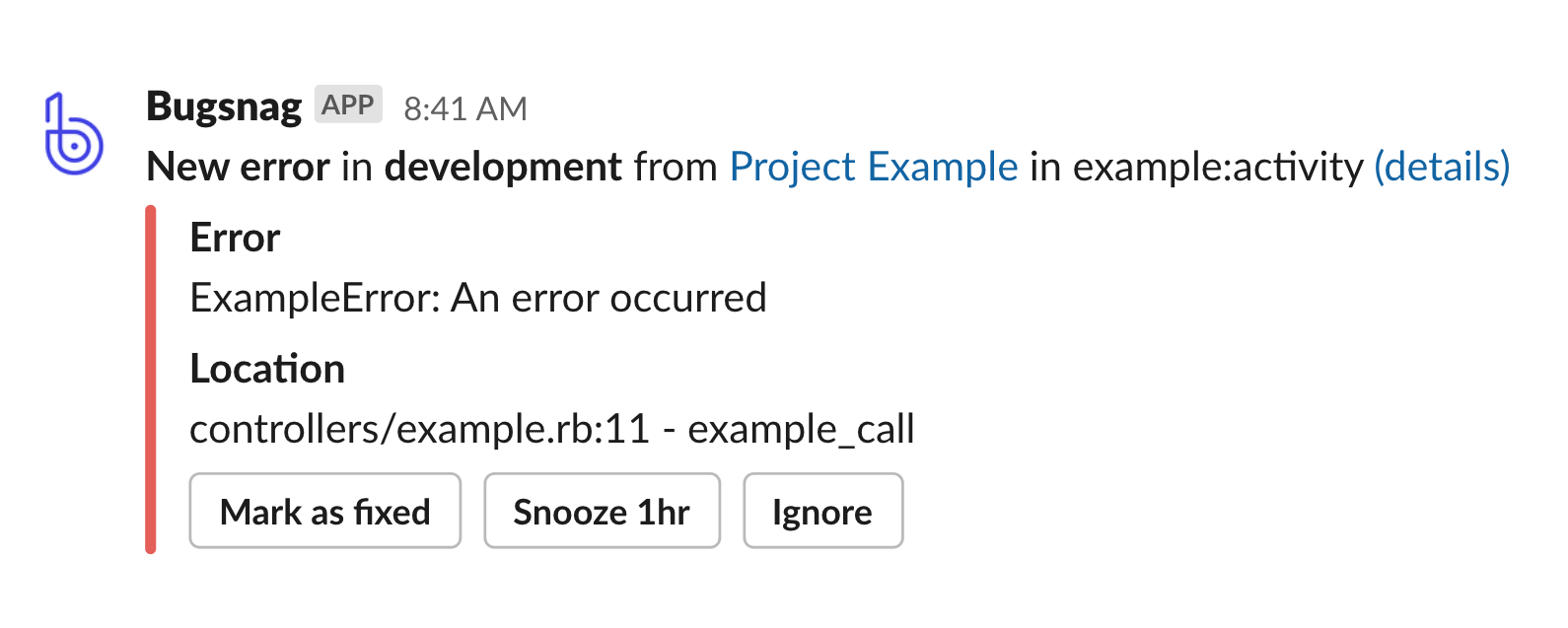
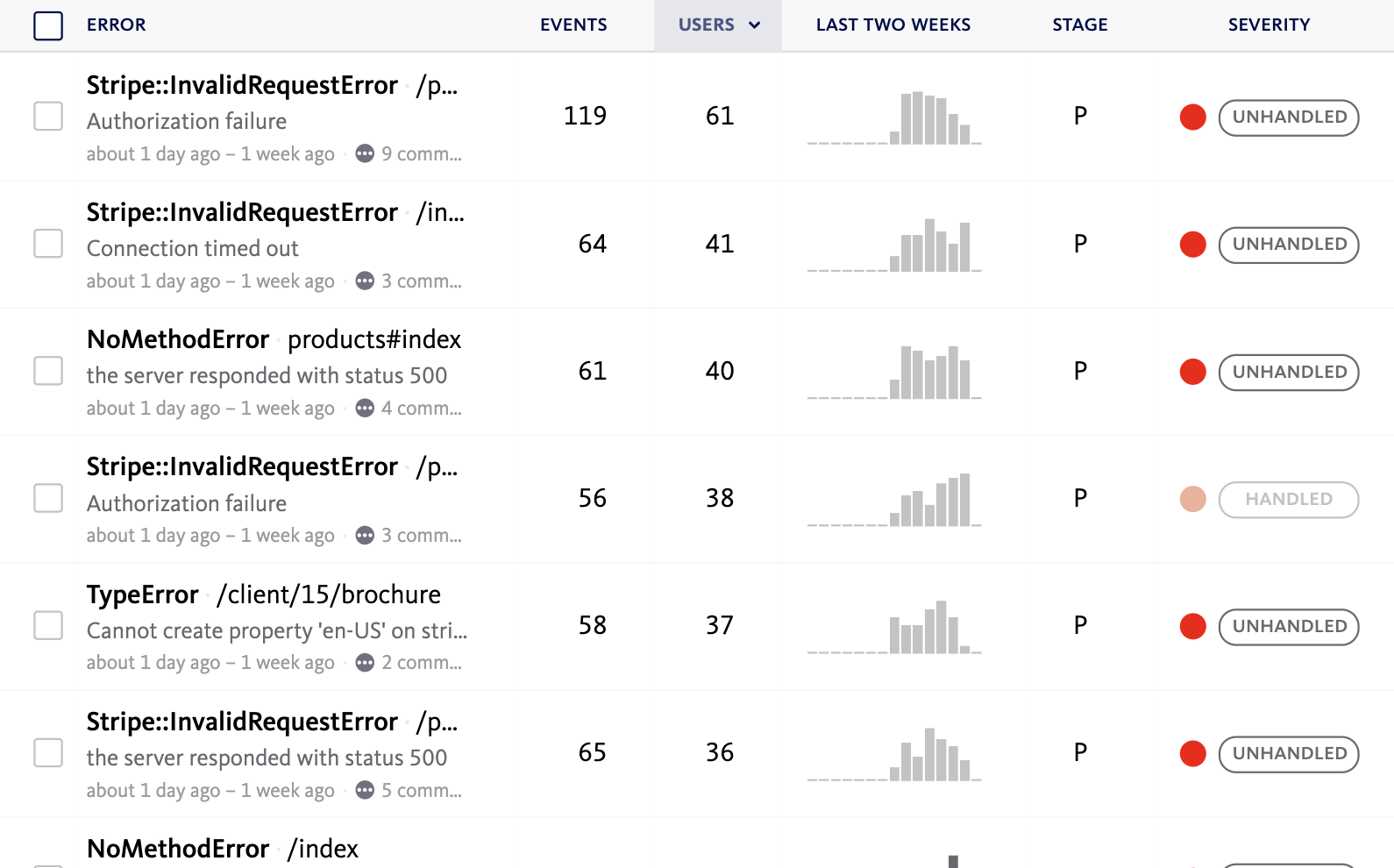
Intelligent error grouping
All errors are grouped by root cause so you can see which errors happen most often and affect the most users. Easily discover the most critical bugs by sorting user and event counts.
Comprehensive Restify error reports
All the diagnostic data you need to reproduce and fix errors, centralized in one place.
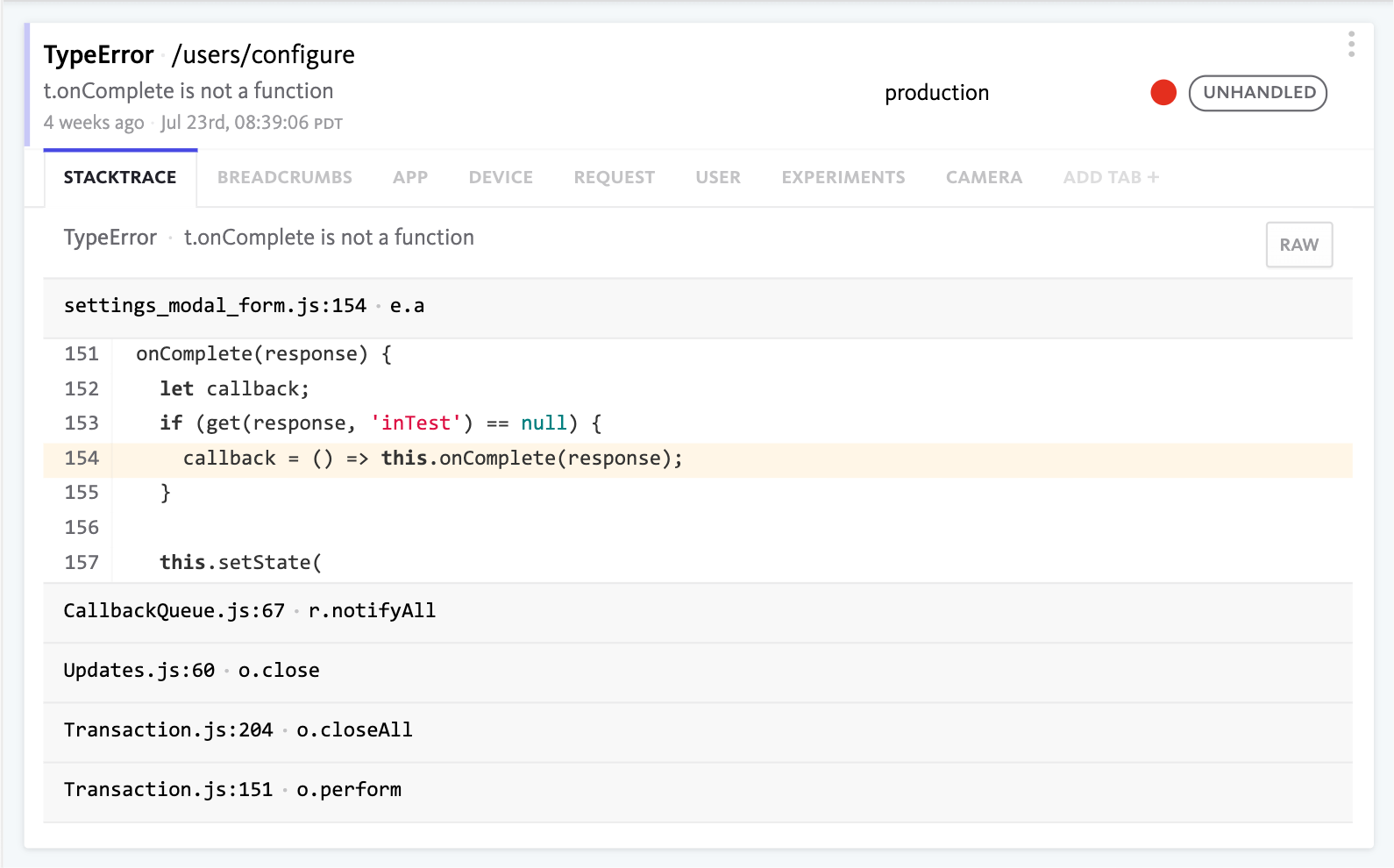
Full stacktrace with code inline
Debugging is easier when you can see the line of code that crashed. Bugsnag captures a stacktrace for every error and even shows you the source code. If you use GitHub, Bitbucket, or GitLab, you can integrate to have it link directly to your repository.
Automatically collected diagnostic data
Error reports automatically include request information including parameters, session and cookie data, release stage, and hostname.

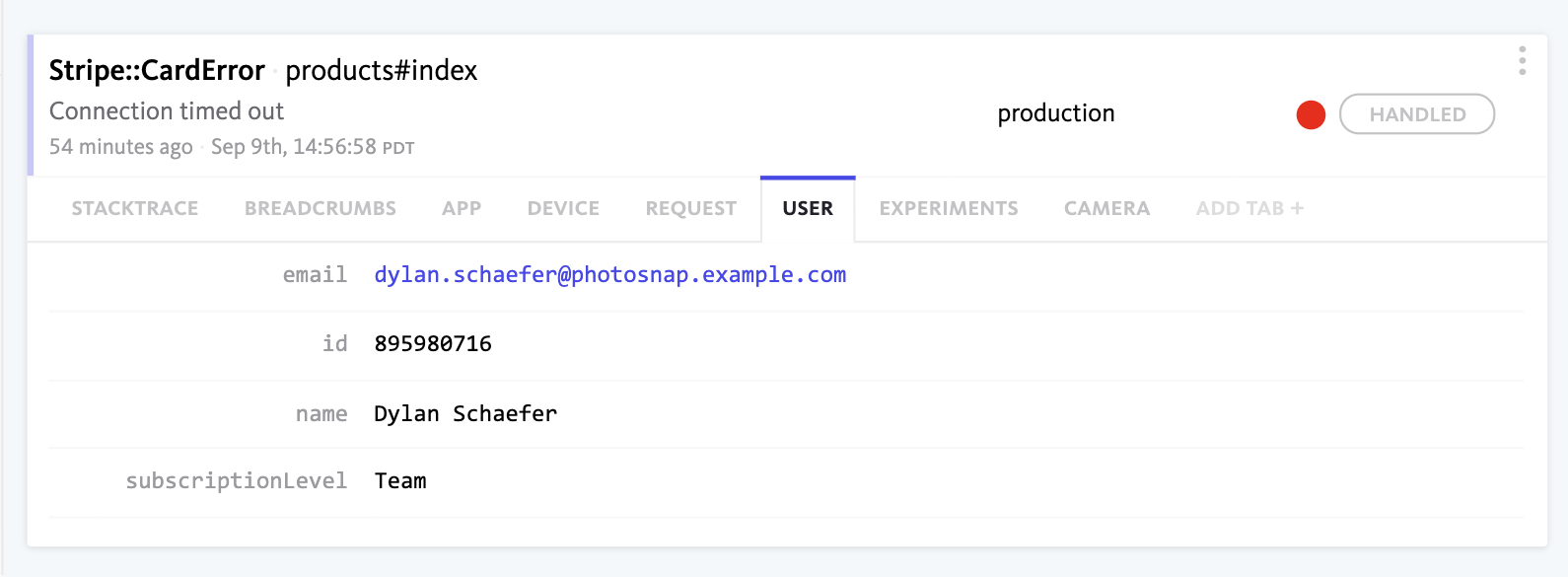
Debug info all in one place
With Bugsnag, you'll avoid the pain of digging through server logs. Everything you need to reproduce and fix errors is automaticallycaptured and consolidated in an error report.
Built for effective Restify application debugging
No matter your ecosystem, BugSnag works for you.
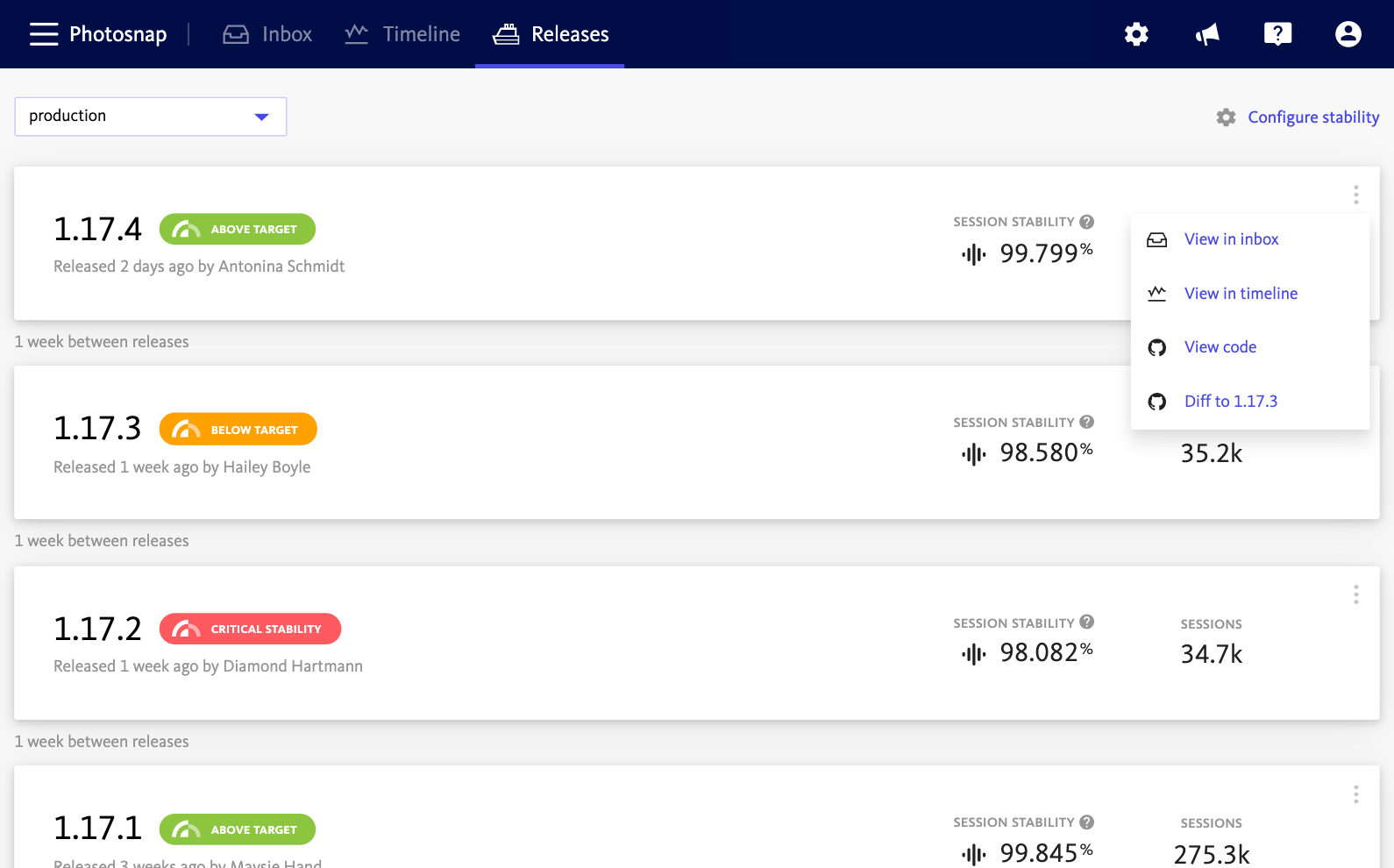
Benchmark releases to improve application health
Use the Releases dashboard to decide if a release is successful or needs to be rolled back. The crash rate indicator shows the percentage of sessions in a release that end in a crash, allowing you to compare release health and track improvements over time.
Customize Bugsnag to meet your requirements
All information in your error report is customizable. You can modify error reports before they're sent with custom diagnostic data if what we're capturing isn't quite enough.
Powerful search and segments
Clear through the noise by using the search builder to find a segment of errors, or an individual error that needs investigating.
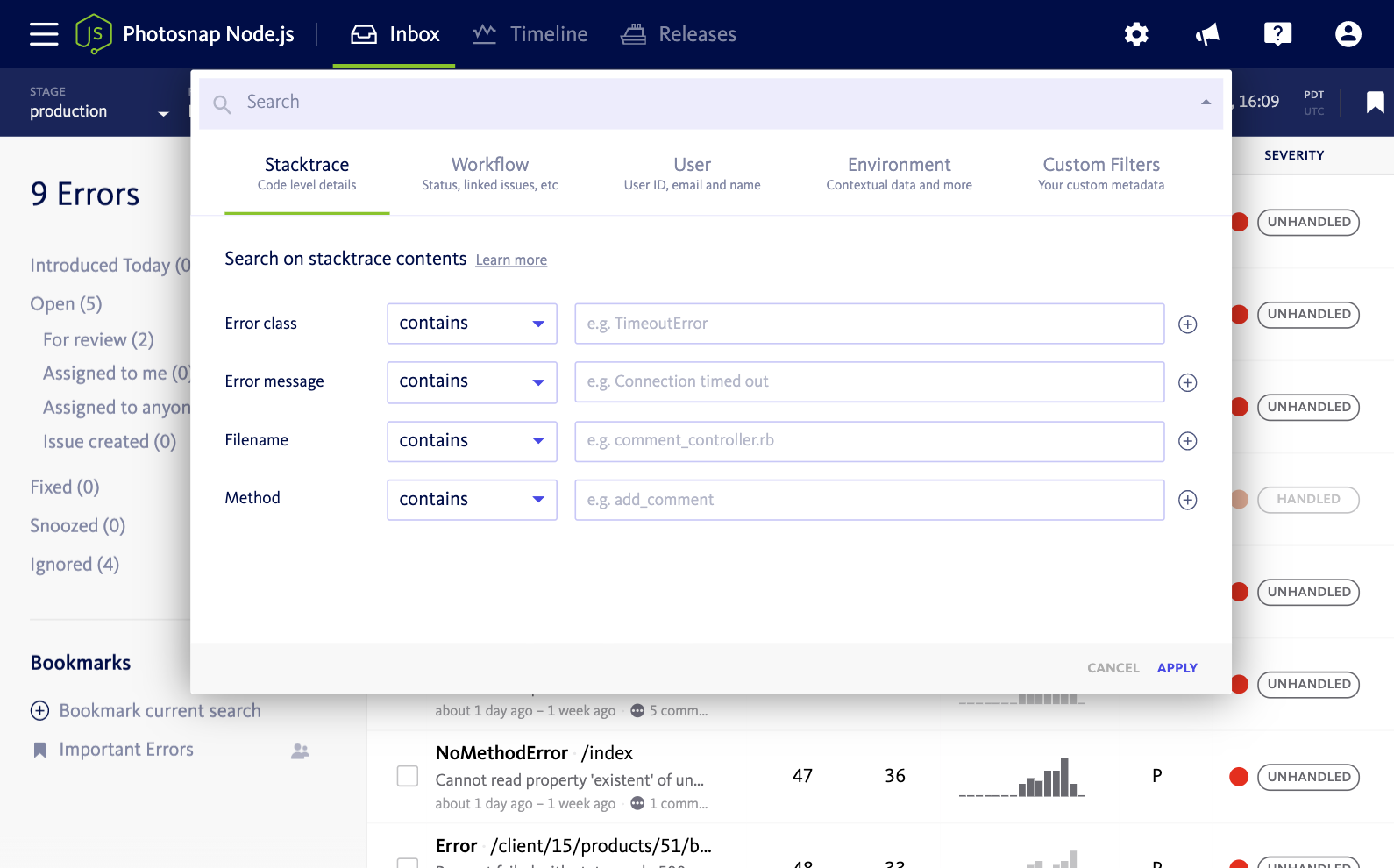
Production ready Restify error reporting
Resilient Restify error reporting built for applications and organizations of all sizes
Lightweight library
Integrating with Bugsnag's lightweight Node.js library does not cause any significant performance decreases.
Open source
All Bugsnag libraries are open source so you can see the error handling code and even make pull requests to suggest improvements.
Enterprise level security
Send errors to our servers using 256-bit SSL, the same encryption used by the world’s leading banks. Or you can host Bugsnag on-premise.
What customers are saying
Billy Pham
Technical Program Manager

Software Engineer, Chime

Nahuel Barrios
Engineering Manager

Antonio Niñirola
Engineering Manager
